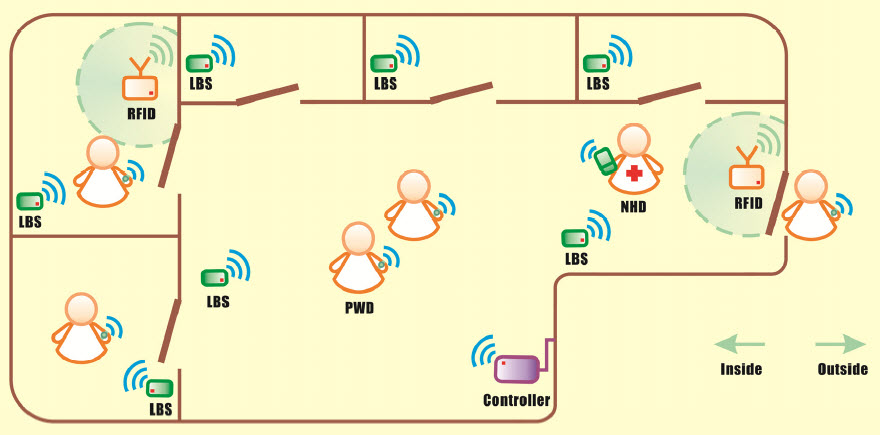Real-time location systems for patient, staff and equipment are on the threshold of becoming a key IT investment in hospitals and other healthcare facilities. In some systems, real-time location is augmented by patient vital sign information allowing the medical staff to be more efficient and provide a higher level of care. These systems rely on a wireless infrastructure.
The most popular solution for localization and tracking, GPS (Global Position System) usually does not work in a hospital environment since satellite signals do not penetrate buildings. This is exacerbated by the growing size of hospital buildings resulting from the trend in hospital consolidation. As an alternate to GPS, early installments of real-time location systems in hospitals have been using RFID technology (active battery powered tags and readers), however, such deployments have following limitations:
- Location is only recorded when the person (patient or nurse) is within a few meters of an installed RFID reader therefore no real-time location can be provided unless RFID readers are installed with sufficient density.
- Installing multiple RFID readers requires wiring network cable inside the building which usually requires a lot of engineering efforts especially for existing buildings (digging the wall etc. for burying the cables).
- Little communication capability is provided by RFID; functions such as vital-sign monitoring and emergency communications cannot be provided.
Therefore, although RFID systems have been successfully deployed for asset management in healthcare applications especially in the tracking of pharmaceuticals, the potential for patient/staff real-time location is very limited.
An alternative has been to introduce WiFi (Wireless Local Area Networks) in hospitals which offers good communication capabilities but is not easily used for location determination. Such initiatives also face issues including the complexity and cost of installation, especially since hotspot density needs to be very high to have wireless location capability (any coordinate in the coverage must be in the range of at least three access points instead of one). Moreover, a WiFi transceiver typically transmits 100-300mW power, which could potentially interfere with medical equipment.
OMESH’s solution in smart health care is based on the OPM technology, which can gracefully resolve all the above issues of existing systems. More details…



